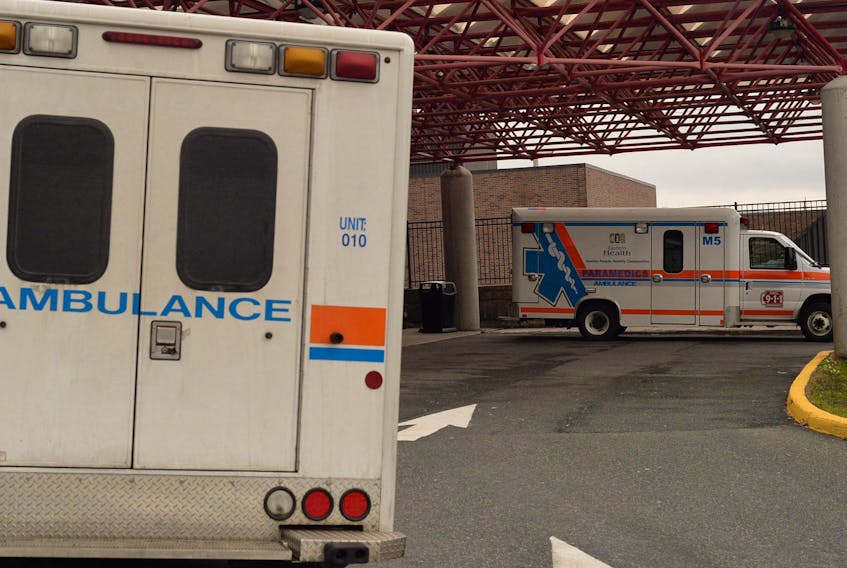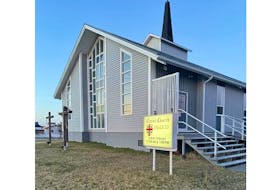ST. JOHN'S, N.L. — Ambulance red alerts are a huge concern for the Newfoundland and Labrador Association of Public and Private Employees (NAPE).
Red alert is the term used when no Eastern Health ambulances are available to respond to calls for service. They are classified in two sections, including Level 1, which covers a call requiring service and no ambulances are available, and Level 2 is when all ambulances are unavailable, but no calls come in.
“According to our completed ATIPPA request to Eastern Health, there were an alarming 341 red alert incidents in 2017. That number increased to 460 in 2018. There have been 156 red alerts in the first quarter of this year alone,” NAPE president Jerry Earle stated in a news release Wednesday.
“In other words, there were 957 instances in the past 28 months when an ambulance was not immediately available to respond to a call.”
To date in 2019, there have been 156 red alerts accounting for 3,283 minutes, and there were 90 Level 1 incidents in the first quarter of this year.
While NAPE is concerned about the red alerts and is seeking to have that number reduced to zero in the future, Eastern Health says this is not realistic.
Instead, it recommends that if the public needs assistance they should call 911 as they always do and an ambulance will be made available as required.
In a news release late Wednesday afternoon, Eastern Health stated that eliminating red alert situations in any emergency medical services system in not realistic, and it continues to make adjustments to reduce the number of red alerts and shorten the duration of red alert incidents.
Eastern Health said it introduced new measures earlier this month to relieve pressure on ambulance resources and to reduce the number of red alerts.
The policy allows ambulance teams to leave lower-acuity patients in the care of paramedics who may already be present at an emergency department waiting to transfer care of the patient to emergency room staff, allowing the second paramedic team to return to active duty without delay.
Time matters
“Every second counts when it comes to this vital health care service; every time there is a red alert, someone’s life could be at risk,” Earle said.
“Immediate action must be taken to address this issue. This is not a one-off situation; the powers that be have been aware of it for years. Yet despite two external consultant reports filled with recommendations to better the system, things are actually getting worse.”
There have been 48 calls so far in 2019 that are classified as emergency calls, of the 219 calls waiting.
In 2017, there were 372 calls waiting during a Level 1 alert, 87 of which were classified as emergency calls. In 2018, those numbers grew to 538 calls waiting during a Level 1 alert, with 136 of those being emergency calls.
“These numbers are staggering and the truly frightening thing is it appears as if the situation is worsening,” Earle said.
“Our members need staffing levels, resources, policies, and procedures in place to do their job effectively. We know they are under tremendous stress and many are burning out or burnt out already. Knowing that they may be missing out on precious minutes when someone is in need is not making matters any better for them or their mental health.”
According to Earle, Eastern Health and the Department of Health and Community Services must address these issues quickly to render those numbers to zero.
“Anything short of that is unacceptable,” he said.
Making changes
Eastern Health says it has taken a number of additional actions in recent years to improve its paramedicine program for the benefit of patients. For example, it has moved to a dynamic deployment model in the city that has units located in stations and on standby in specific areas around the city.
This not only helps shorten response times to a call, it also shortens the total turnaround time of a call, so crews are available and back on the street faster, Eastern Health says.
In cases where only three ambulances on duty are available, all non-emergency transfers are ceased to further reduce the potential for a red alert situation, the health authority says.
A review of Eastern Health’s call volume per time of day and day of week was completed to determine peak call volume periods. This was compared against the staffing model to see where scheduling changes were needed to help ensure maximum coverage during peak call volume periods, Eastern Health says.
In situations where call volume is higher than usual, Eastern Health continues to contact its neighbouring EMS services to request assistance, and calls in extra crews during times of higher-than-usual call volumes.
Related









